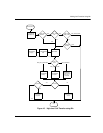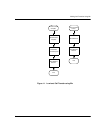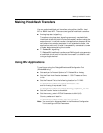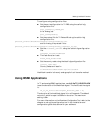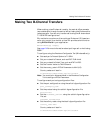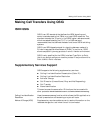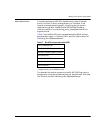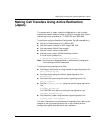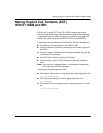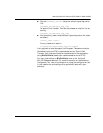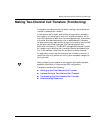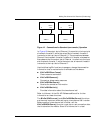
Making Call Transfers Using QSIG
November 2009 185
Call Diversion Call Diversion (Unconditional, Busy and Not Responding) contains
three scenarios:
Originating - the board places a call and the far end attempts to
divert the call to a different destination. You can set Originating
to enable or disable through the call configuration file using
enable_call_diversion flag.
Served - the board receives an incoming call and attempts to
divert it. This service requires new Bfv API calls to initiate and
wait for the diversion to complete. However, it is possible for a
call to fail to divert. You use
BfvCallDivert,
BFfvCallWaitForDivert,
and BfvLineDivert. Once the call
is diverted, it is terminated. The application uses
BfvLineTerminteCall after a successful call diversion to make
sure that the call has been released completely.
Diverted To - the board receives an incoming call that is diverted
by another party. This service uses
call_res.redir_number
and
call_res.redir_reason that is returned by the
BfvLineWaitForCall or BfvCallWaitForSetup which notifies
the Bfv application that the incoming call is being diverted from
another party. As a result, the phone number of the device that
diverts the call and the reason for the diversion is provided. The
Bfv application has the option to refuse the diverted call through
BfvCallReject followed by BfvCallWaitForRelease.
Note: You must set the QSIG control parameter, disable_alerting
to On in order for the call to be rejected and retained by the
party attempting to divert the call. If this parameter is not set
to On, then the incoming call is terminated.
You can manually send an alerting message through
BfvCallSendAlerting and is used when alerting is disabled in
the call control configuration file and when the application wants
to send an alerting message to the remote end rather than answer
the call.
Call Transfer QSIG supports two B-channel transfer. Both channels must support
the TBCT capability. This is accomplished through the
BfvLineTransferCapabilityQuery. However you must connect
the 2-B channels so that both parties can communicate while the
transfer occurs. The application then uses
BfvCallSwitchConnect
function to connect both B-channels. For further details, see
Volume 2, Bfv-Level Call Control and Call Switching, Bfv Reference
Manual.




